A Desire Named Streetcar
East Windsor (Google Maps location)
June 14, 2014
The Connecticut Trolley Museum’s current slogan is, “Where History Moves You.” And I think that’s pretty great. For me and my boys, that slogan only has literal meaning; that is, we took a 3-mile historic trolley ride through the wilds of East Windsor.

I guess that for some of an older generation, it’s possible that a day spent with the trolleys of yore could be emotionally moving. People really loved trolleys. And of course, they are still used all over the world as a form of safe (usually) and effective (usually) public transportation.
As you’d assume, if trolleys are your thing, you’ll love this place. If trolleys aren’t your thing, and you’re zoning out while reading this, wake up! The Connecticut Trolley Museum offers unlimited trolley rides with your paid admission!
Still flagging? This will wake you up:
In addition to trolleys, the complex is also home to the Connecticut Fire and the Connecticut Motor Coach Museums. Sure, it costs a few bucks, but you get three museums!
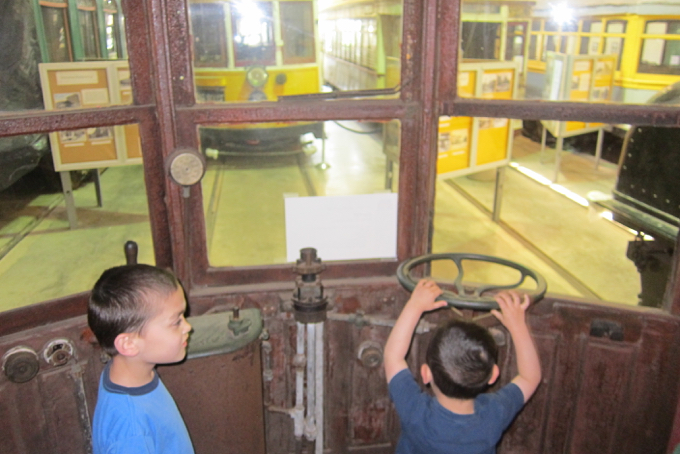
Okay, since I’m not on the Trolley Museum payroll, I must tell you that the Motor Coach Museum consists of nothing more than a few old buses and you’d have no idea that it actually exists even after walking through “it.” Twice. But the Fire Museum is a pretty large collection of antique fire trucks and firefighting equipment.
Enough about that, we’re here for the trolleys. What say you, Museum?
he Connecticut Trolley Museum has over 70 pieces of rail equipment dating back to 1869. During your visit, you can see historic passenger and freight trolley cars, interurban cars, elevated railway cars, passenger and freight railroad cars, service cars, locomotives, and a variety of other equipment from railways around Connecticut. You will also find examples from Brooklyn, Boston, New Orleans, Milwaukee, Cleveland, Springfield, Lynchburg, Montreal, and even Rio De Janeiro, Brazil.
Impressively, the Trolley Museum has a pretty good website wherein you can click on each trolley they have and learn its history and provenance and stats. This is incredibly rare for these types of places. Trust me, I know.
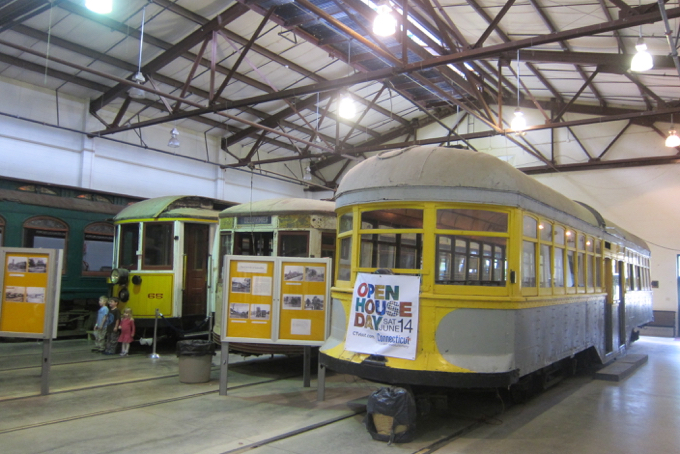
They also have much better pictures of their collection than I do. This is incredibly normal for these types of places. Trust me, I know.
Anyway, backing up to the first picture on this page and the trolley we rode for our little out and back ride through town. Here’s more than you ever wanted to know about that particular car:
Built to the order of the Fair Haven & Westville Railroad Co. in 1902, the J.G. Brill of Philadelphia, Pennsylvania, built this double truck, 15 bench open car, which received the number 355.
Holy crow. I knew it was old, but it wasn’t until writing this very sentence that I came to learn it was over one-hundred years old. Wow. The boys and I climbed aboard and prepared for the ride and then this happened:

This picture gives me anxiety. It’s okay if you’re confused. My older son Damian has Smith-Magenis Syndrome and among the 50-billion things we deal with, random kids grabbing his arm ranks pretty high on the “Holy crap, don’t let that happen” list. Fortunately, he was 8 in this picture and the aggression and violence hadn’t really come to the fore yet.
But he could certainly glare then:

I suggested to the mom that she may want to move her kid. She did and we were fine. Let’s learn some more.
On May 23, 1904, the FH&WRR Co. was conveyed to the Consolidated Railway. This was only five days after the Consolidated Railway was formed to take over all of the New York, New Haven & Hartford Railroad owned or leased street railways. During the existence of Consolidated Railway, May 18, 1904 to May 31, 1907, car #355 carried on with no changes. On that latter date all property rights and franchises were merged into the New Haven Railroad. On February 26, 1910 the New Haven Railroad sublet all its street railroad properties to a new company, The Connecticut Company.
That was pretty boring to non-hundred-years-ago streetcar fanboys like myself. Although, man, the rise and fall of so many railroad companies must have been pretty spectacular. Also spectacular is when Damian and Calvin have a lovely time together. See?
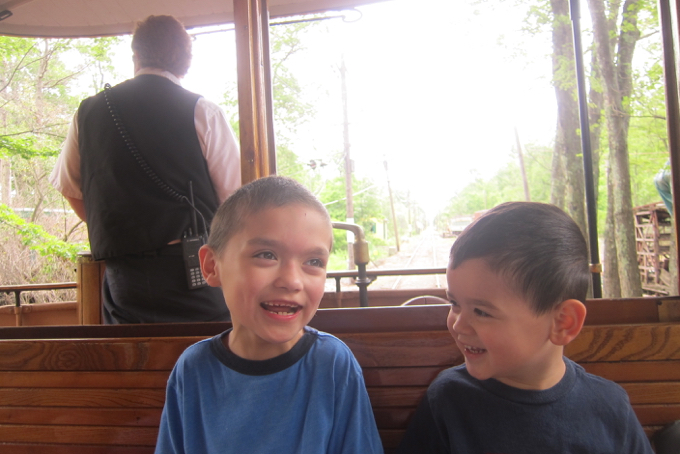
Despite the insanely loud trolley whistle – that the conductor guy continued to do over and over and over – the boys had a blast on our ride. These were not the most comfortable things on your butt and bones and joints. Probably why my sons had such fun!
Also fun? Learning more about this particular car:
Over the next couple of years, #355 would receive the iconic Connecticut Company yellow paint, red letters and gray roof (more or less), but it still operated as #355. With all the companies which made up Connecticut Company, the numbers were all mixed up on the revenue cars, so on August 1, 1915 a new numbering system was introduced to replace the muddle. With the change, #355 became #663 of the New Haven Division and would operate in New Haven for 32 years. During this same period, sloping metal was installed over the bumpers up to the dasher face to try and prevent riders standing on the bumpers when riding to the “Bowl” games. Charters and the Yale Bowl operation from the railroad station would be her main service in her later years.
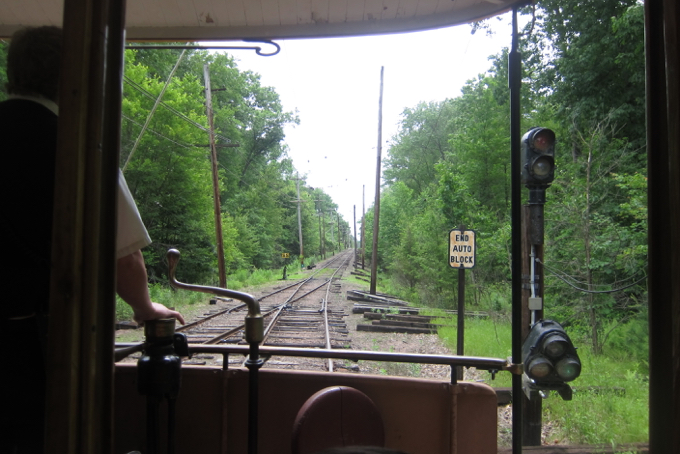
The Connecticut Co. did not quite change the New Haven Division over to buses when World War II came. Once more the open cars rolled whenever the weather allowed. With the war’s end, the Connecticut Co. wanted to get rid of trolley cars. By 1947, buses began to arrive. On November 22, 1947, the last Yale Bowl run came about for a football game between Hillhouse High and West Haven High. Trolley service ended on September 25, 1948 in New Haven. Car #633, that same year, came to Connecticut Trolley Museum.
Just like that? The car takes some high school kids to a football game, retires, and ends up here in East Windsor a few months later? I guess a load of credit should be given to whomever realized that street cars and trolleys were museum-worthy while they were so out of favor and recently retired.

The trolley ride was cool, but there’s much more to this place. It’s as large as you’d imagine a museum housing 70 trolley cars would have to be. Before going inside, there were a bunch of cars outside still.
Most allowed for visitors to hop in and poke around, which is exactly what we did. I would guess most people are drawn to this doofy looking thing:
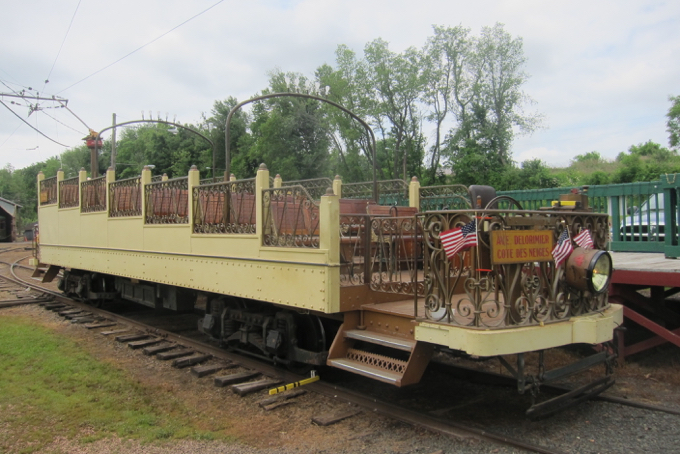
And yes, it still rides and the museum puts it on the track every so often, especially for some of their special events. So what the heck is it? It’s Montreal Tramways Open Observation Car No. 4, of course. Built in 1924…
The cars seated 50 persons, had four motors and standard air brakes. The car’s weight was 44,650 lbs (compared to the first two cars each at 43,700 lbs). In the late 1930’s they were equipped with dynamic brakes for use on the mountain line up Mt. Royal.
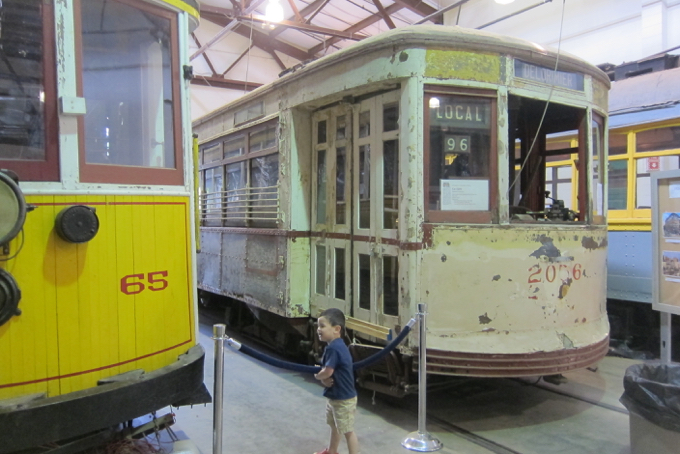
There are many more paragraphs about this thing if you’re interested. I just wanted to mention some little know CTMQ-family trivia: I proposed to my wife atop Mount Royal. And without me doing that you wouldn’t be looking at these two scamps running around a trolley museum in East Windsor, Connecticut. Breaking rules the second I turn my back…
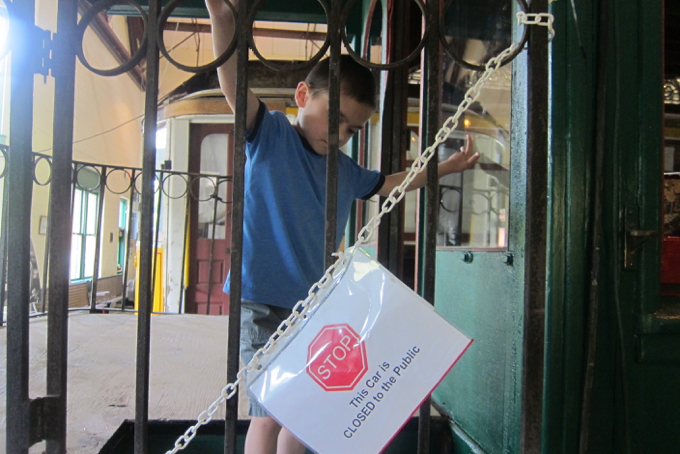
Sigh. What am I gonna do with these two?
I’m going through my pictures and just read that the Trolley Museum has a ticket booth from the Park Street Station along the Tremont Street Subway in Boston. This is cool because the Tremont Street Subway was the first subway in the US, built to get the trolley cars off the streets and out of the way. I apparently didn’t find it important to take a picture of the actual booth though. Enjoy a picture of the most foreboding looking train car I’ve ever seen instead:
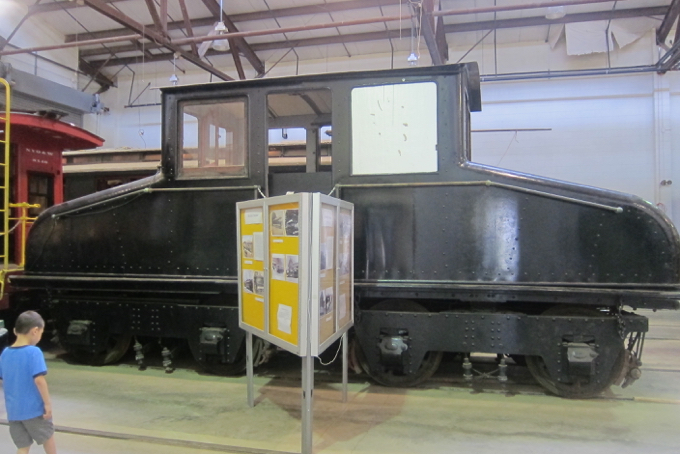
Sorry, I don’t really know what that thing is. You’ll just have to get up to the museum to check it out yourself. Again, I was rather impressed with the organization, breadth, and depth of the Trolley Museum’s collection. There are little explanatory signs with each car, too. I’m just not being a very diligent reporter today.
Sorry.
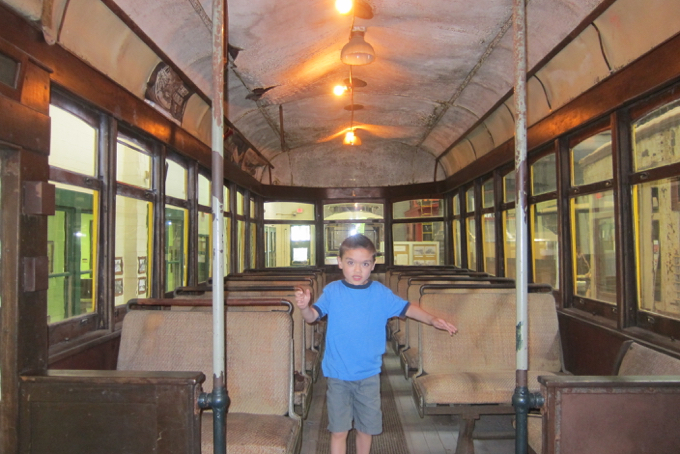
The museum also caters to kids a bit more than you’d think as well. They do have a little train table in an area they claim is the kids zone or whatever, but I’d guess that any child over 2 is far more interested in the real trolley cars than a little play area.
Calvin was 3 at the time of our visit and I think you can tell from the pictures what he preferred!
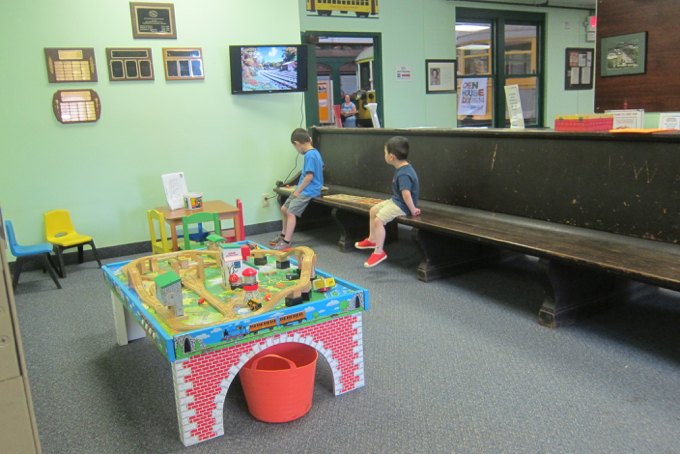
Despite the loud whistle blows, Calvin wanted another trolley ride of course! Back outside we went and that’s when I came upon something that the museum holds in high regard; the Isle of Safety!
You have to read that in overwrought Announcer Man Voice: The… Isle of Saaaafetyyyy!
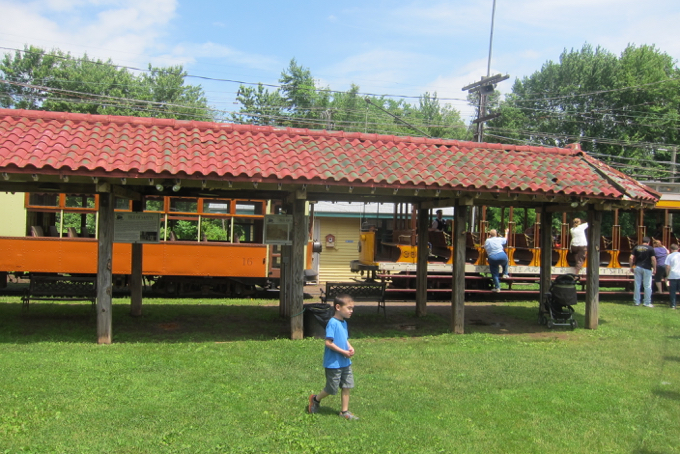
I’m not even kidding. This thing was apparently a rather great acquisition for the museum. They have an “Isle of Safety” newsletter and a relatively large restoration effort was undertaken for it. So what is the Isle of Safety?
At the start of the 1900s, as the automobile was advancing both technology-wise and affordability, city streets were becoming a mix of trolleys, horse and carriages, automobiles, and bicycles. In Hartford, waiting for the trolley meant standing in the middle of State House Square amongst all this commotion. The idea was raised in 1910 to provide an “aisle of safety” with iron posts and ropes, by 1912 some temporary posts and ropes were placed by the city. The local press celebrated the new “Isle of Safety” allowing the public to wait for trolleys out of the danger of traffic.
The following year, the artist Charles Noel Flagg waited for a trolley behind the posts and ropes and came up with a an idea for a proper waiting station. Writing to the city, he proposed an elevated platform to eliminate having the public standing in puddles or slush and to clearly define the area. Surprisingly, the City of Hartford responded with plans for a raised platform with a roof. The new Isle of Safety was completed by December 1913 for a cost $2,681.
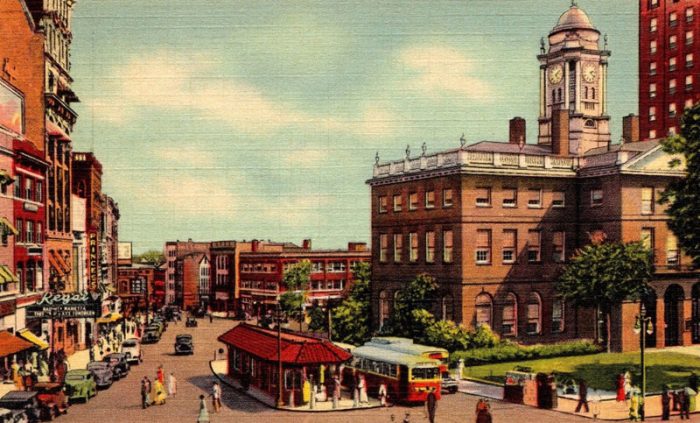
The Isle of Safety at State House Square in Hartford! (picture from the museum’s site)
See, those people above have no safety island. Anyway, here’s more:
The Isle of Safety served tens of thousands of passengers that traveled by trolley and then by the buses that replaced them. It was nearly lost in 1976 when State House Square was paved over, but was rescued by the Knox Foundation and moved to a temporary location. Several attempts to relocate it back to the area of the state house proved unsuccessful. With calls for its preservation, the Knox Foundation moved the Isle of Safety to the Trolley Museum in 1988.
Today, like it was intended, the Isle of Safety provides protection for visitors waiting to ride a vintage trolley down the Trolley Museum’s demonstration railway.
Good stuff. And again, good for the museum for recognizing what would be important for the museum at a time when likely very few did. Speaking of which, I’ve saved the best for last:
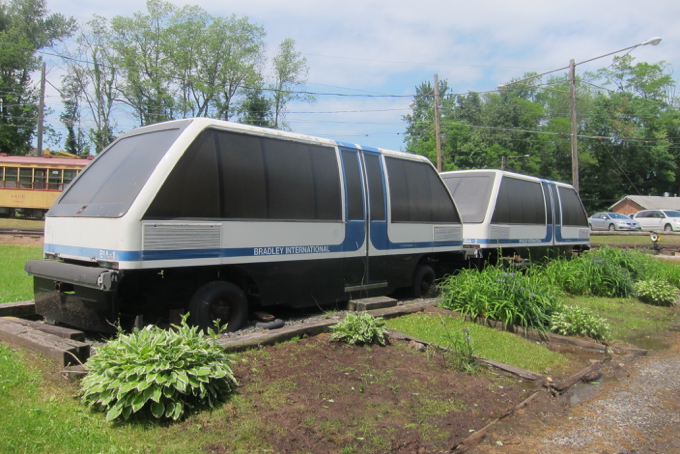
Aw, yeah, the Bradley airport people mover cars! Because Bradley is SO HUGE. Ford won the contract in the early 1970’s and the whole tramway was built at the airport by 1975. These were computer controlled “Personal Rapid Transit” cars that operated kind of like elevators. They only moved when summoned and went to where the summoners asked it to go.
Which sounds kind of cool on paper I guess. They had their own little tramway tracks and everything! The track was simply a way of getting people from parking areas to the terminal. It was built! It worked! The cars looked awesome!
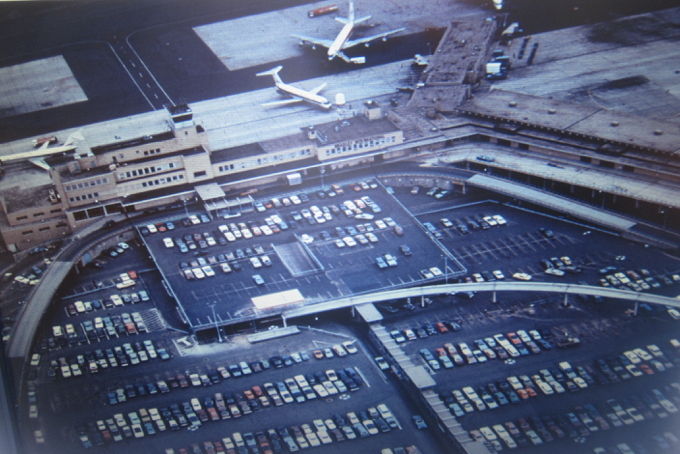
Then incoming Governor Ella Grasso said, “nah” and shut the whole thing down before anyone could ride it. I believe the project was experimental anyway – sort of a way for Ford to show that this type of automated transport could work in busy urban areas as well. On the one hand, the trains that exist at Heathrow, Hartsfield, and lots of airports are somewhat similar I guess… but not really. As they move thousands of people a day. These little things were like personal transporters which… was dumb.
Not only was the tram line abandoned, the entire trackway and everything was destroyed and no evidence remains today except… except at the Trolley Museum in East Windsor.
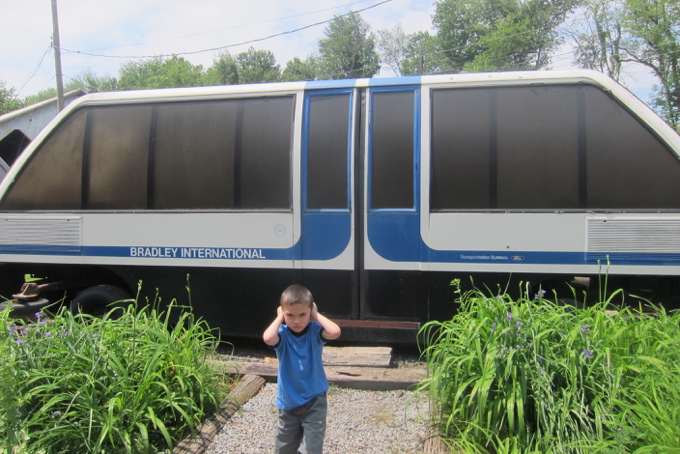
That’s pretty much it. Connecticut has another trolley museum down in East Haven if you need a full day of Trolley Trippin’ in the state. Both seem to have similar seasonal programs for kids and families (Christmas lights rides, spooky Halloween rides… things like that). All three of us had fun here and it’s fair to say we learned a thing or two.
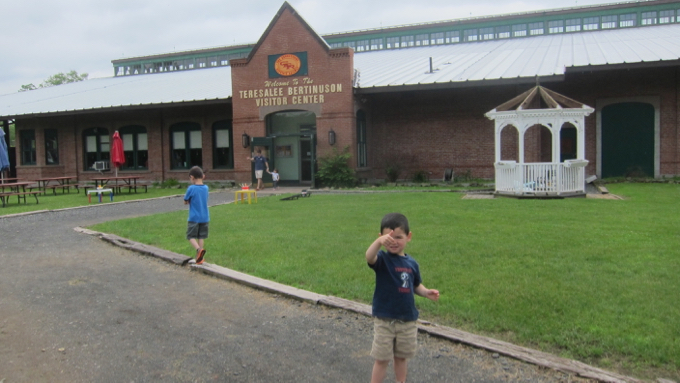
![]()

Leave a Reply